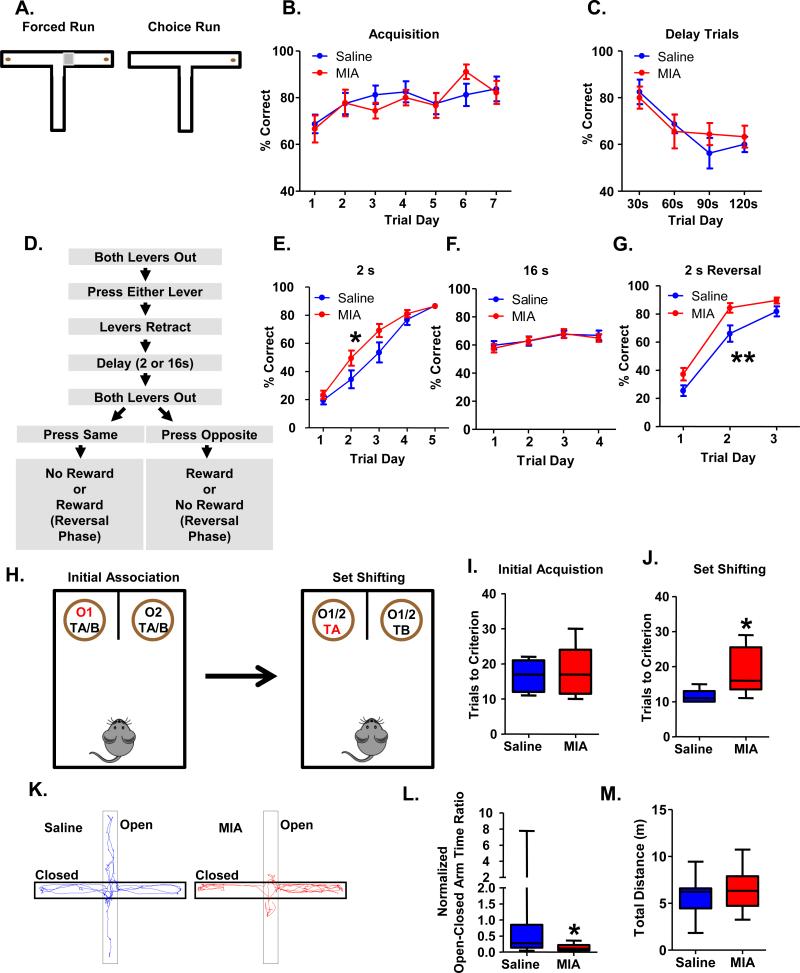Figure 4.
Adult MIA offspring are not impaired in tests of working memory but show impairments in attentional set shifting and increased anxiety-related behaviors. (A) Diagram of the t-maze task. Each trial consisted of 2 runs. On the first run, mice are forced to either the left or the right arm, where they obtain a food reward. After a pre-determined delay, during the choice run, the mice are allowed to choose either arm, but only selection of the opposite arm results in a food reward. (B) Adult MIA offspring learn the t-maze task comparably to Saline offspring. (C) Adult MIA offspring perform comparably to Saline offspring as the working memory load is increased in the t-maze task. (D) Flow chart of the delayed alternation task (see Supplemental Methods for details). (E) Adult MIA offspring acquire the delayed alternation task, using a 2 s intra-trial interval, more rapidly than Saline offspring (treatment by trial day interaction, *p<0.05). (F) Adult MIA offspring perform comparably when the working memory load is increased by increasing the intra-trial interval to 16s in the delayed alternation task. (G) Adult MIA offspring acquire the reversal rule faster than Saline offspring (**p<0.01, effect of treatment). (H) Diagram of the attentional set shifting task. In the initial acquisition phase, mice must learn to associate an odor with the presence of a reward, irrespective of the bedding medium that is present. Once the animal reaches criterion (8 of 10 consecutive correct trials), it proceeds to the set shifting portion of the task where the animal must now learn that the bedding medium predicts the presence of a reward irrespective of the odor. (I) MIA and Saline offspring acquire the task in an equivalent number of trials. (J) MIA offspring take significantly longer to reach criterion in the set shifting portion of the task. (K) Representative paths taken by MIA and Saline offspring in the Elevated Plus Maze. (L) MIA offspring spend significantly less time in the open arms of the EPM relative to the closed arms although (M) they travel an equivalent distance overall in the task. (See also Supplementary Figure S5).

